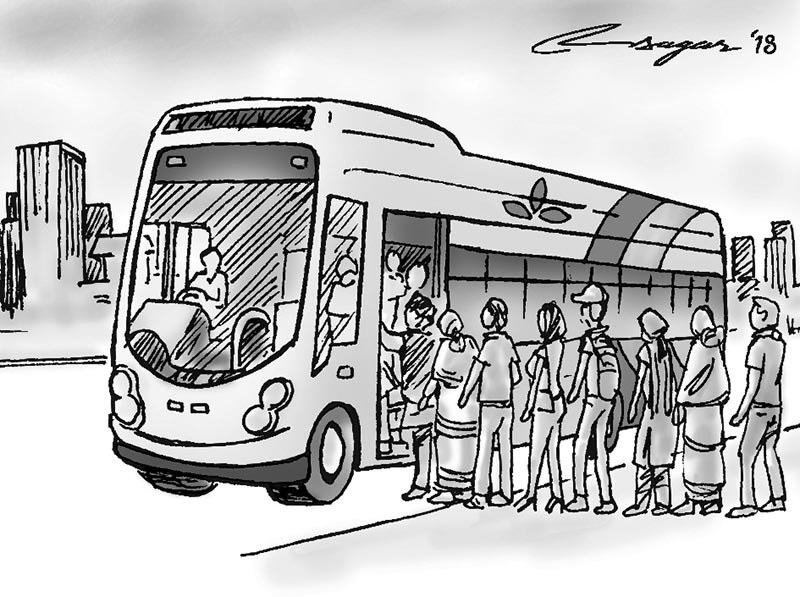Electrifying transport: How near, or far, we are
The deployment of electric vehicles is contingent upon proper policies and development of infrastructure such as roads and electricity generation capacity in the first place
Electric vehicle market is expanding globally. According to the International Energy Agency, new registrations of electric cars hit a new record with over 750,000 sales worldwide in 2016. Further, the global electric car stock increased to two million vehicles the same year. The electric cars include battery-electric, plug-in hybrid electric and fuel cell electric light duty passenger vehicles.
China was the largest electric car market, accounting for more than 40 per cent of the electric cars sold in the world and more than double the amount sold in the United States. China has, however, electric car market shares close to 1.5 per cent. The global electric car stock currently corresponds to just 0.2 per cent of the total number of passenger light duty vehicles in circulation.
Research, development and deployment, and mass production prospects are leading to rapid battery cost declines and increase in energy density. Signs of continuous improvements from technologies currently being researched confirm that this trend will continue, narrowing the cost competitiveness gap between electric vehicles and internal combustion engines.
Nepal has witnessed a rapid growth of motorised transport vehicles. And it will continue to expand. One of the much sought-after strategies of sustainable transport programme is to promote electric vehicles in the transport fleet. The government of Nepal has aspired to have 50 per cent electric public transport by 2030. A recent estimate reveals that there are around 300 electric cars and 2,000 electric scooters in use in Nepal. Additionally, there are a few hundreds electric three-wheelers running mostly in the Tarai.
Most of the political parties have aspired to have transport fleets comprising electric railway lines, metro lines, monorails and battery operated private vehicles. In recent years, the government has put nation-wide electric railway networks on high priority.
It is learnt that feasibility studies for Mechi-Mahakali and Kathmandu-Pokhara routes have already been completed. Likewise, a detailed project report (DPR) for the Berdibas-Simara section of the Mechi-Mahakali route has already been completed and that construction works for this section are under way.
The DPR for other section is also underway. Five border towns—Biratnagar, Janakpur, Bhairahawa, Nepalgunj, and Kakarvitta—are planned to be connected with the Indian railway network.
The government is also seeking funding support for the East-West Railway. Recently there have also been discussions for the possible railway connection from China up to Lumbini through Kathmandu.
As part of the Asian Environmentally Sustainable Transport Initiative, United Nations Centre for Regional Development (UNCRD) has supported the Government of Nepal (GON) in preparing National Sustainable Transport Strategy (NSTS). Electric vehicle promotion strategies are among the some of the key policy elements of the NSTS.
If all these aspirations are put together in the national plans and policies, the transport sector will need a significant amount of electricity to meet the growing demand.
Adequate supply of electricity is the main determinant in expanding the electric vehicle market. There will be some addition in electricity supply in coming years after commissioning of the much talked about Upper Tamakoshi Hydropower Project. That, however, may not be sufficient to support all the economic activities including electrifying the transport sector.
There are, however, no readily available forecasts for the electricity demand in the transport sector at the national level. Nevertheless, policy environment will influence the uptake of electric vehicles.
Uptake of electric vehicles in the transport fleets depends largely on how firmly and quickly the government comes up with the policy to enhance the electric vehicle market. The sooner the government comes up with the policy, the better it is. Otherwise, deployment of electric vehicles still has a long way to go before reaching the scales capable of making a significant impact.
In addition, electric vehicle deployment shall be supported by the development of standards, financial incentives, regulations and infrastructure. Expansion of electric vehicle market will need financial incentives, at least in the beginning. It may not be possible for the government to levy heavy tax on electric vehicle import—as the government is presently doing for private vehicles—and electricity use for operating electric vehicles, which will shrink the government revenues base. Because of this, it may be inappropriate to conclude that there will be a breakthrough of electric vehicles in Nepali transport fleets at least in five to 10 years.
Therefore, the government should find ways to attract finance for infrastructure development and to fuel its economic development activities.
The deployment of electric vehicles is contingent upon the development of infrastructure such as roads and electricity generation capacity in the first place. For the electric vehicle deployment rate to become significant, Nepal first needs to attain some level of economic and infrastructure development (basically the road and electricity). It is already late to initiate a meaningful plan that helps to materialise the government’s 2030 aspirations.
Adhikari is an energy economist






